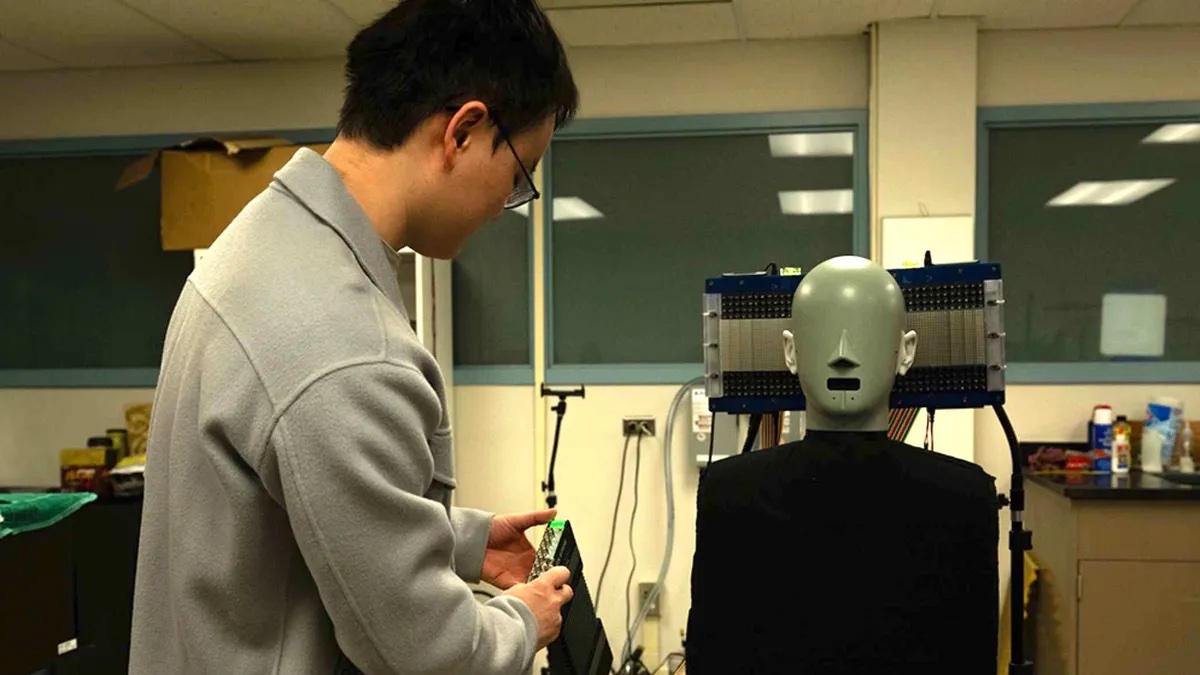We’ve all become accustomed to enjoying music and audio through speakers, relishing the freedom to move around the room or share the experience with others at concerts or movies. But as the world becomes more connected and personal audio listening grows, wireless headphones have become a must-have, allowing us to enjoy audio discreetly without disturbing those around us.
However, what if you could enjoy private audio without the need for headphones, wires, or any wearable devices at all? That’s the innovative promise behind Penn State University’s groundbreaking “Audible Enclave” technology. This new tech uses ultrasonic waves to create pockets of sound that are only audible to someone in a specific location, offering a personal listening experience without the need for headphones or any additional hardware.
The idea behind Audible Enclave is similar to the advanced 3D sound systems used in places like The Sphere music venue, where sound is placed precisely within the space, creating an immersive audio experience regardless of where the listener is seated. In this case, Penn State’s technology uses ultrasonic curved waves that are inaudible to the human ear, but when directed and focused by specially designed metasurfaces—acoustic lenses with microstructures at the submillimeter scale—they create audible sound at the point where two sound beams intersect.
The result is a “pocket” or “enclave” of sound that can be heard only by those who are exactly positioned within that space. This technology can bypass obstacles such as people’s heads or even furniture, delivering sound directly to the intended listener with pinpoint accuracy.
“We essentially created a virtual headset,” said Jia-Xin “Jay” Zhong, a postdoctoral scholar in acoustics at Penn State. “Someone within an audible enclave can hear something meant only for them – enabling sound and quiet zones.”
While the technology shows great promise, it’s still in the early stages. At the moment, the sound can only be transmitted about one meter (3.3 feet) at a volume of around 60 decibels—roughly the sound level of a normal conversation. However, for most private listening scenarios, this is sufficient. Think of how close you are to your phone when listening through wireless headphones—often no more than a meter away.
In its current form, Audible Enclave is most likely to be useful in situations where individuals are in close proximity to their audio source, like when listening on a phone or other mobile device. But the tech’s developers believe that by amplifying the ultrasound signal, they could expand both its range and volume, making it possible to offer private audio experiences at larger venues, such as concerts or events, or even on public streets and parks in the future.
Imagine walking down the street with audio content playing privately in your ears without the need for headphones or earbuds. Or perhaps you’re sitting in a park and enjoying your music without disturbing those around you. This kind of discreet listening could provide more freedom and less detachment, allowing you to enjoy audio while remaining aware of your physical surroundings and open to interaction with others.
With the potential to completely change the way we consume audio, the Audible Enclave technology has enormous possibilities. Whether used in public spaces, on mobile devices, or in immersive environments, it could eliminate the need for traditional headphones and give us all a more seamless way to enjoy our favorite tunes, podcasts, or movies.
This exciting new tech is sure to catch the attention of mobile phone manufacturers, audio device creators, and even headphone brands. While the technology isn’t quite ready to replace the multi-billion-dollar headphone industry, its potential applications are vast, and it’s only a matter of time before we see how it will shape the future of audio experiences.
By Impact Lab


